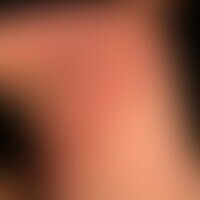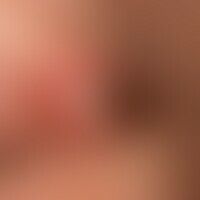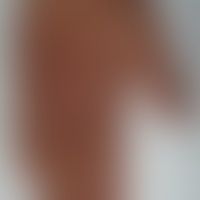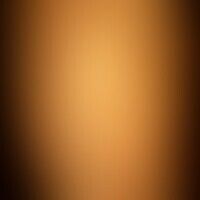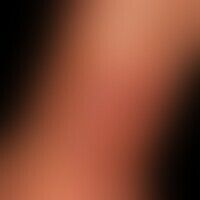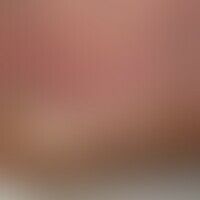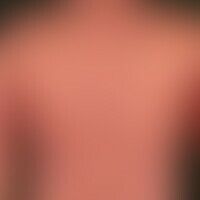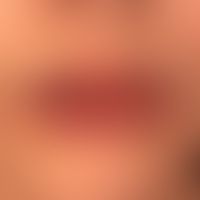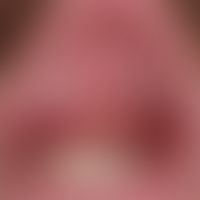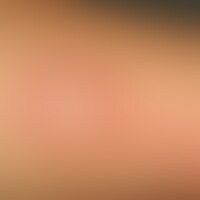Image diagnoses for "red"
901 results with 4543 images
Results forred
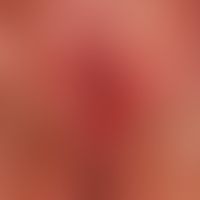
Lichen sclerosus (overview) L90.4
Lichen sclerosus et atrophicus: in addition to the still detectable changes of the lichen sclerosus, blurred, flat, erosive, red, solid plaque on the posterior commissure with spreading to the perineum. Histological evidence of a spinocellular carcinoma.
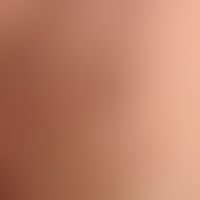
Cutaneous botryomycosis L98.0
Botryomycosis. less spectacular clinical findings. circumscribed, less painful area with pustules, nodules and extensive induration. the diagnosis was histologically confirmed by evidence of a deep granulomatous inflammation with abscesses and the presence of eosinophilic granules, the so-called Splendore-Hoeppli phenomenon.
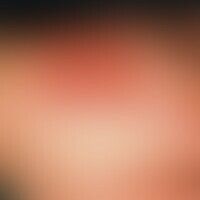
Back of the hand edema, chronic traumatic R60.0

Folliculotropic mycosis fungoides C84.0
generalized clinical picture: surface smooth plaques, which dissect at the edges, with clear evidence of follicular involvement.

Klippel-trénaunay syndrome Q87.2
Klippel-Trénaunay syndrome. Extensive nevus flammeus; so far no evidence of soft tissue hypertrophy. No pelvic obliquity!
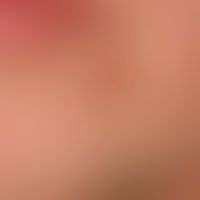
Folliculitis (superficial folliculitis) L01.0
Folliculitis (superficial folliculitis): 33-year-old man; recurrent, single inflammatory follicular papules on the lips, nose and forehead; heals after 10-14 days without scarring.

Melkersson-rosenthal syndrome G51.2

Eyelid dermatitis (overview) H01.11
Seborrhoeic eyelid dermatitis: chronic recurrent, therapy-resistant dermatitis of the eyelids and the adjacent facial areas; the symptoms subside if the patient stays in climatically favoured regions.
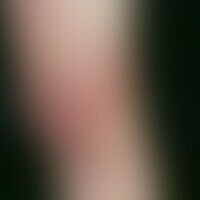
Acrodermatitis chronica atrophicans L90.4
Acrodermatitis chronica atrophicans. 78-year-old female patient with confirmed neuroborreliosis 6 years ago and still positive Borrelia serology. Multiple, chronically inpatient, persisting for 2 years, asymmetrical (only on the left leg), blurred, sometimes burning pain, large, red to red-livid, smooth erythema, partly with crinkled surface (cigarette-paper-like puckering).
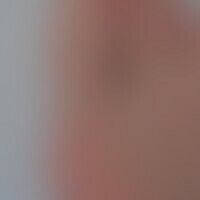
Gout M10.0
Arthritis urica: sudden spontaneously occurring spontaneously and under slight pressure painful (walking is difficult) redness and swelling of the right metatarsophalangeal joint of the big toe Known hyperuricemia
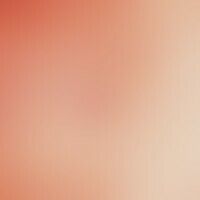
Neck fistula and cyst, median Q18.8
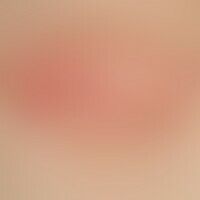
Bowen's disease D04.9
Bowen, M.: solitary plaque, progressive in size, occasionally accompanied by itching, measuring 1 x 7 cm, sharply and arching, border-emphasized plaque, on the right lumbar side in a 74-year-old woman; a reddish, partly scaly aspect and central fading are impressive.

Necrobiosis lipoidica L92.1
Necrobiosis lipoidica: bilateral, gradually increasing, moderately sharply defined, confluent, reddish-brownish, centrally slightly atrophic plaques that have existed for about several years.
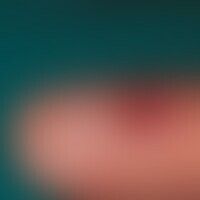
Pyogenic granuloma L98.0
Granuloma py ogenicum (pyogenic granuloma) A 14-day-old, trauma-induced, centrally ulcerated, slightly bleeding, rapidly exophytically growing, benign, soft, spherical, red, sharply defined tumour in the region of the end of the finger; slightly painful.
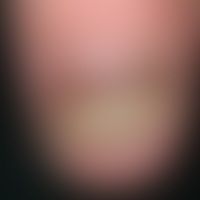
Nail hematoma T14.05
Nail hematoma: Apparently caused by repetitive trauma (probably triggered by a trauma from frontal trauma, e.g. during a football match), transverse bleeding, the growing nail area is normally stained.
